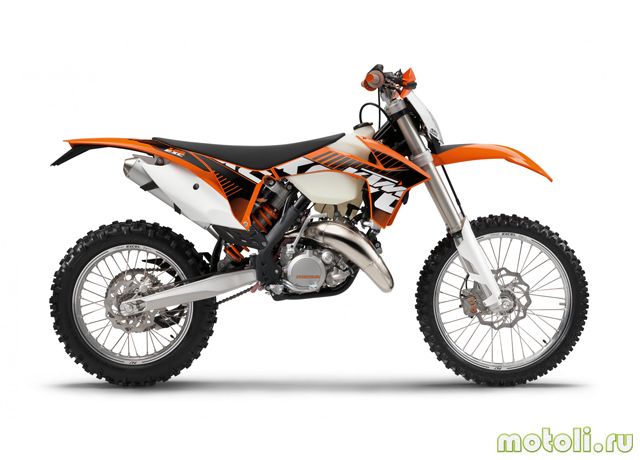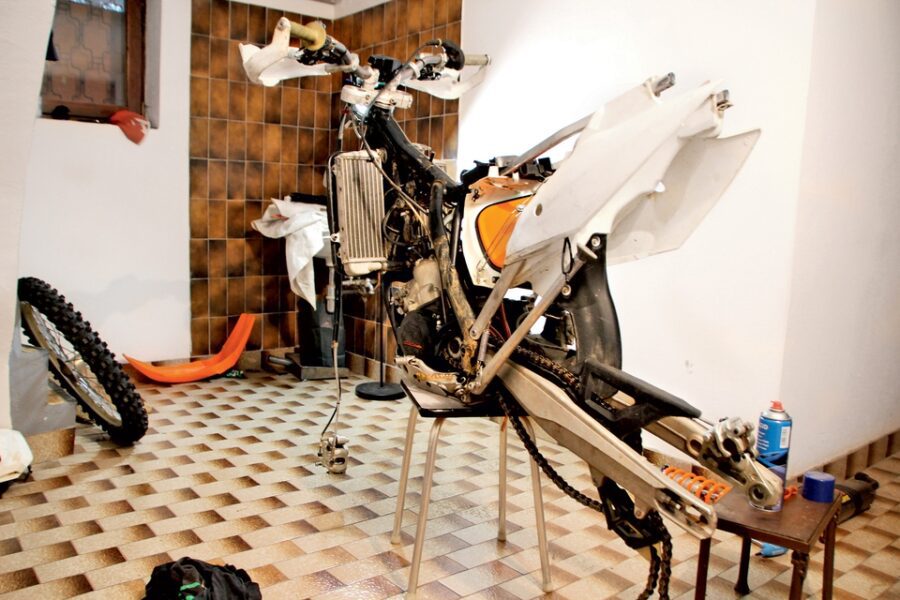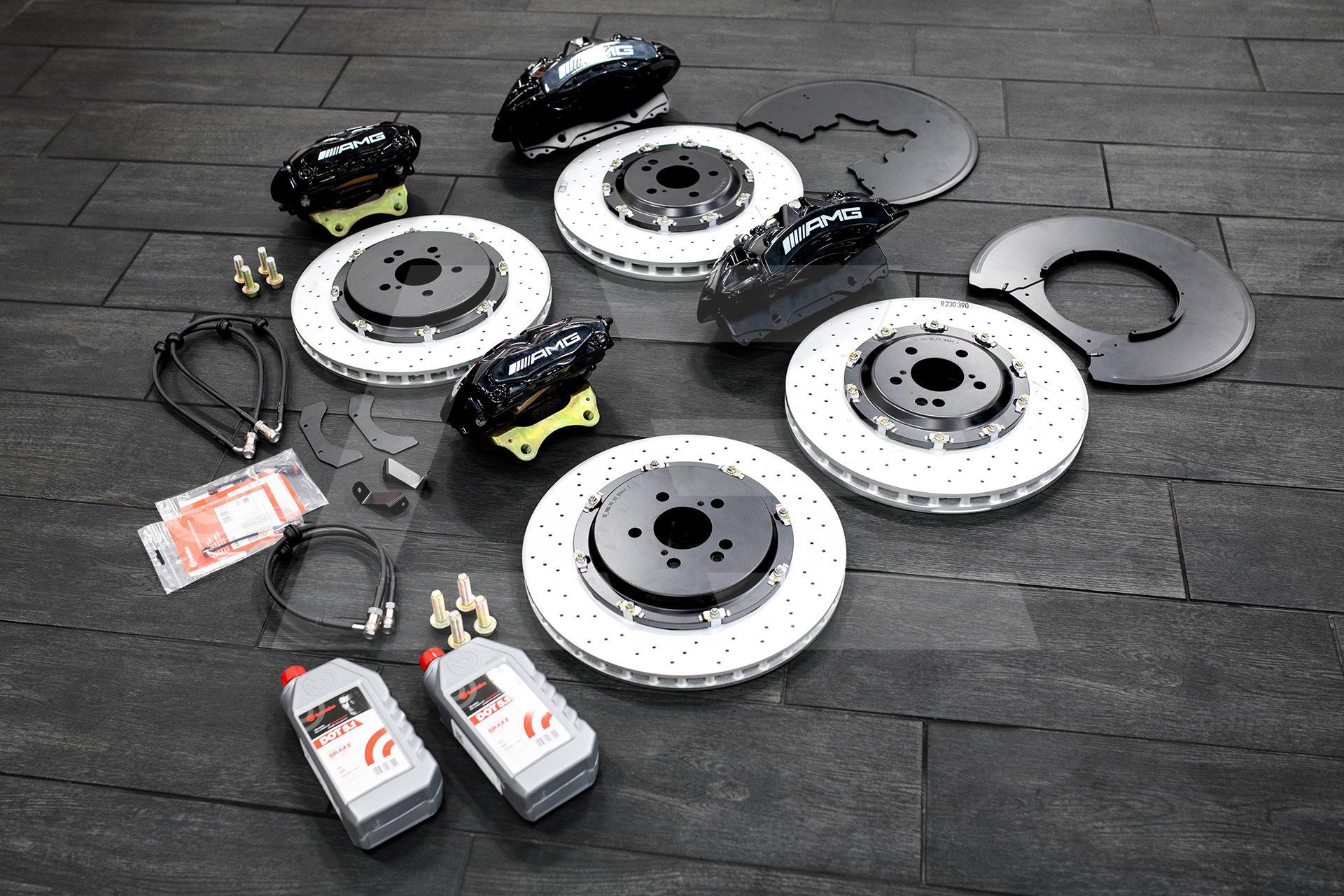
First-hand test: KTM 125 EXC, 2012
(Iz Automagazina 07/2013)
text and photo: Matevž Gribar
I admit that even in our editorial office, we at least once went into the topic, declaring that four-stroke are more economical and durable. When making such a statement, generalizations should be avoided, since the statement may be true in some segment. But if you compare exclusively on your own experience maintenance cost four-stroke and two-stroke hard enduro, the wallet praises the latter. If I ignore costs due to close contact with Mother Earth (broken handlebar flap and throttle body), regular cleaning and maintenance with small consumables (grease, cleaners, chain spray, air filter oil), then After 70 hours, the costs will be relatively short: the transmission oil had to be changed every 20 hours of operation (0,7 liters of oil with a viscosity of 15W50), and the spark plug had to be changed twice (for preventive purposes only).
I admit that despite the factory's recommendation to check the piston and cylinder after 40 hours of operation, I had not yet done so, but I looked through the exhaust port at the piston and rings. Both are in very good condition. It is necessary to separate the driving of the professional racer from the driving of the hobby user, since the first engine is constantly in the maximum speed range, and I myself cannot yet do this in the race.

During this time, I have replaced four pairs of tires. Metzeler MCE 6 Days ExtremeThe FIM enduro tire for all types of terrain has proven itself to be excellent when first installed. After 20 hours, it was beautifully worn and without serious damage. When I then fitted the softer versions of the tires twice (once motocross tires Dunlop MX31, the second FIM Sava Endurorider Pro Comp MC33 enduro tire) traction on slippery trails was excellent, but flexing on harder terrain. Finally, I tried the hard version of Sava's MC33 - you can read about it here.
I have to refute two more statements made in the first test (6/2012). I scream stability the motorcycle and then the car was handed over to Bogdan Zidar, an off-road motorcycle maintenance technician, and the suspension was adjusted according to his feel (not according to the KTM book, which otherwise describes it in great detail). Who cares! No more bounces and subsequent instability of direction on uneven surfaces (for example, on torn rubble or loose building material). A few taps on the adjustable suspension can make a difference both day and night!

Another mistake I made about fuel consumption. Sure, the scroll two-stroke engine consumes more than the Yamaha YBR 125, but it's not particularly thirsty: I haven't had to refuel in any two-hour cross-country race. It is true, however, that as the rate increases, the level in the transparent fuel tank falls steadily. This year we won the first and second races of the Quehenberger SXCC (www.sxcc.si) in the Sport E1 class. Graham: Exposing a muffler. Or that stone before a sharp turn to the right uphill, unfortunately, now deceased, Vrtoiba.

Basic data
Sales: AXLE doo, Kolodvorskaya c. 7 6000 Koper Phone: 05/6632366, www.axle.si, Seles Moto Ltd., Perovo 19a, 1290 Grosuplje Phone: 01/7861200, www.seles.si
Test model cost: 7.590 €
Technical information
engine: single-cylinder, two-stroke, liquid-cooled, 124,8 cm3, foot start, Keihin PWK 36S AG carburetor.
Energy transfer: Wet clutch, 6-speed gearbox, chain, secondary gear ratio 13-50.
Frame: chrome-molybdenum, tubular, head tilt angle 63,5 °.
brakes: front disc Ø 260 mm, rear disc Ø 220 mm.
Suspension: front adjustable telescopic forks WP Ø 48 mm, stroke 300 mm, rear adjustable shock absorbers WP, stroke 335 mm, directly mounted on swing forks (PDS), preset for weight 65-75 kg.
Tires: 90 / 90-21, 120 / 90-18, Metzeler MCE 6 Days Extreme, recommended pressure 1,5 bar (road), 1 bar (terrain).
Growth: 960 mm.
Fuel tank: 9,5 l, oil mixture 1:60.
Wheelbase: 1.471 mm.
Weight: 95 kg (without fuel).
We praise and reproach
a light weight
engine power (volume)
engine torque (volume)
suspension and brakes
good original service manuals
quick availability of spare parts
ease of maintenance
quality plastic, screws
reliable work
Exposure of the muffler in all two-stroke engines
small buttons on the meter
radiator guards from the Power Parts catalog restrict steering wheel movement
lower top speed and, as a result, less ease of use in faster terrain
lack of torque at low revs (compared to larger models)

